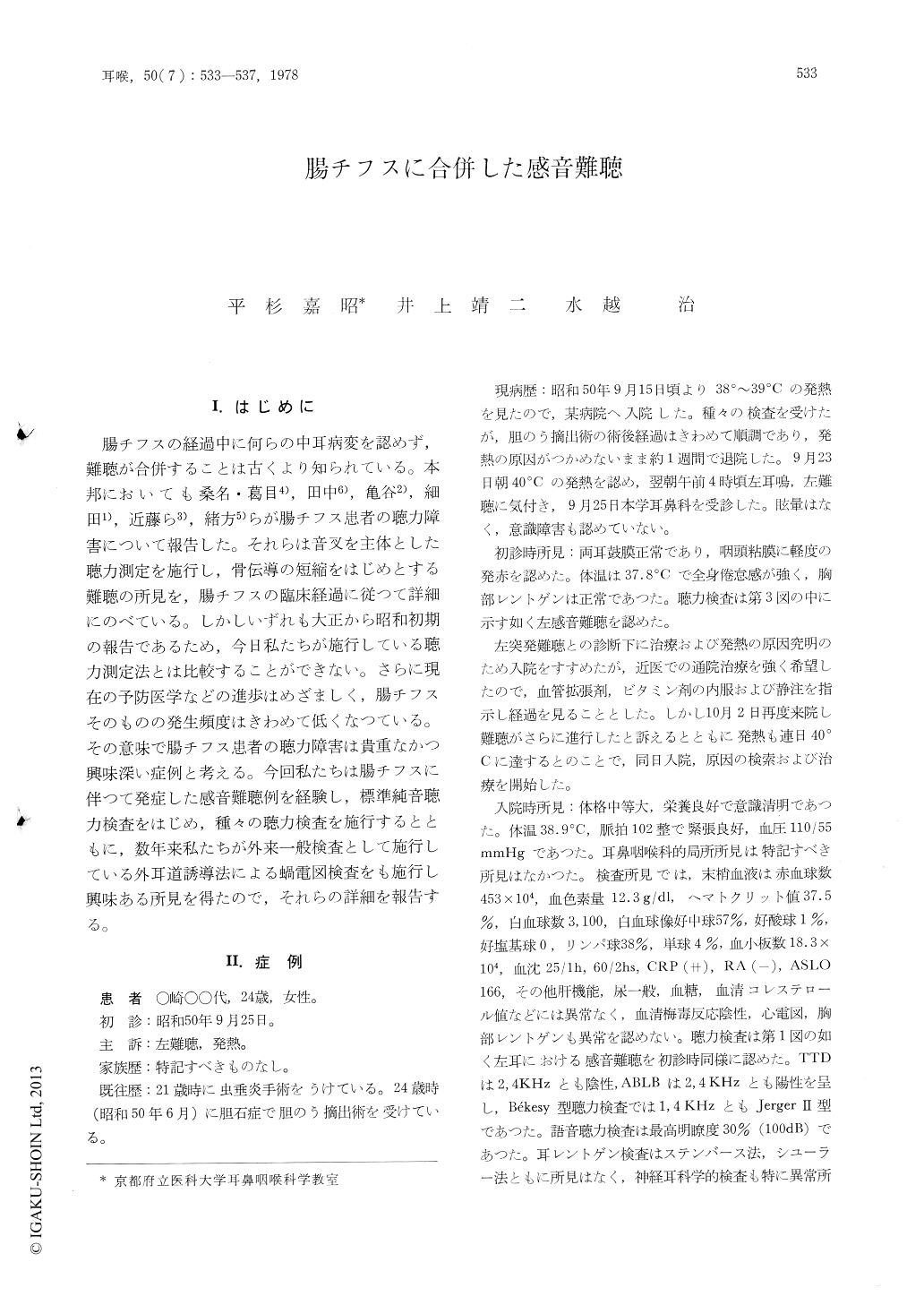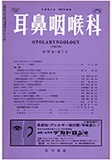Japanese
English
- 有料閲覧
- Abstract 文献概要
- 1ページ目 Look Inside
I.はじめに
腸チフスの経過中に何らの中耳病変を認めず,難聴が合併することは古くより知られている。本邦においても桑名・葛目4),田中6),亀谷2),細田1),近藤ら3),緒方5)らが腸チフス患者の聴力障害について報告した。それらは音叉を主体とした聴力測定を施行し,骨伝導の短縮をはじめとする難聴の所見を,腸チフスの臨床経過に従つて詳細にのべている。しかしいずれも大正から昭和初期の報告であるため,今日私たちが施行している聴力測定法とは比較することができない。さらに現在の予防医学などの進歩はめざましく,腸チフスそのものの発生頻度はきわめて低くなつている。その意味で腸チフス患者の聴力障害は貴重なかつ興味深い症例と考える。今回私たちは腸チフスに伴つて発症した感音難聴例を経験し,標準純音聴力検査をはじめ,種々の聴力検査を施行するとともに,数年来私たちが外来一般検査として施行している外耳道誘導法による蝸電図検査をも施行し興味ある所見を得たので,それらの詳細を報告する。
A case of sensory-neural hypoacusis accompanied with typhoid fever in a 24-year-old woman, who complained of hearing impairment in the left ear and continuous high fever (38-40℃), was reported.
Clinical examinations showed positive Widal reaction (×640) and leukopenia, and she was diagnosed as typhoid fever.
Audiological tests revealed TTS (+), TTD (-), and 30% speech discrimination score. In electrocochleography, the patterns of AP and CM showed low amplitudes and high thresholds.
With recovering of typhoid fever, her hearing was improved and the normal AP and CM responses were recorded.
We concluded that hearing impairment during the course of typhoid fever was due to some reversible damages of the neural and cochlear elements by enclotoxins.

Copyright © 1978, Igaku-Shoin Ltd. All rights reserved.


